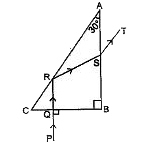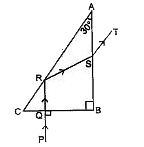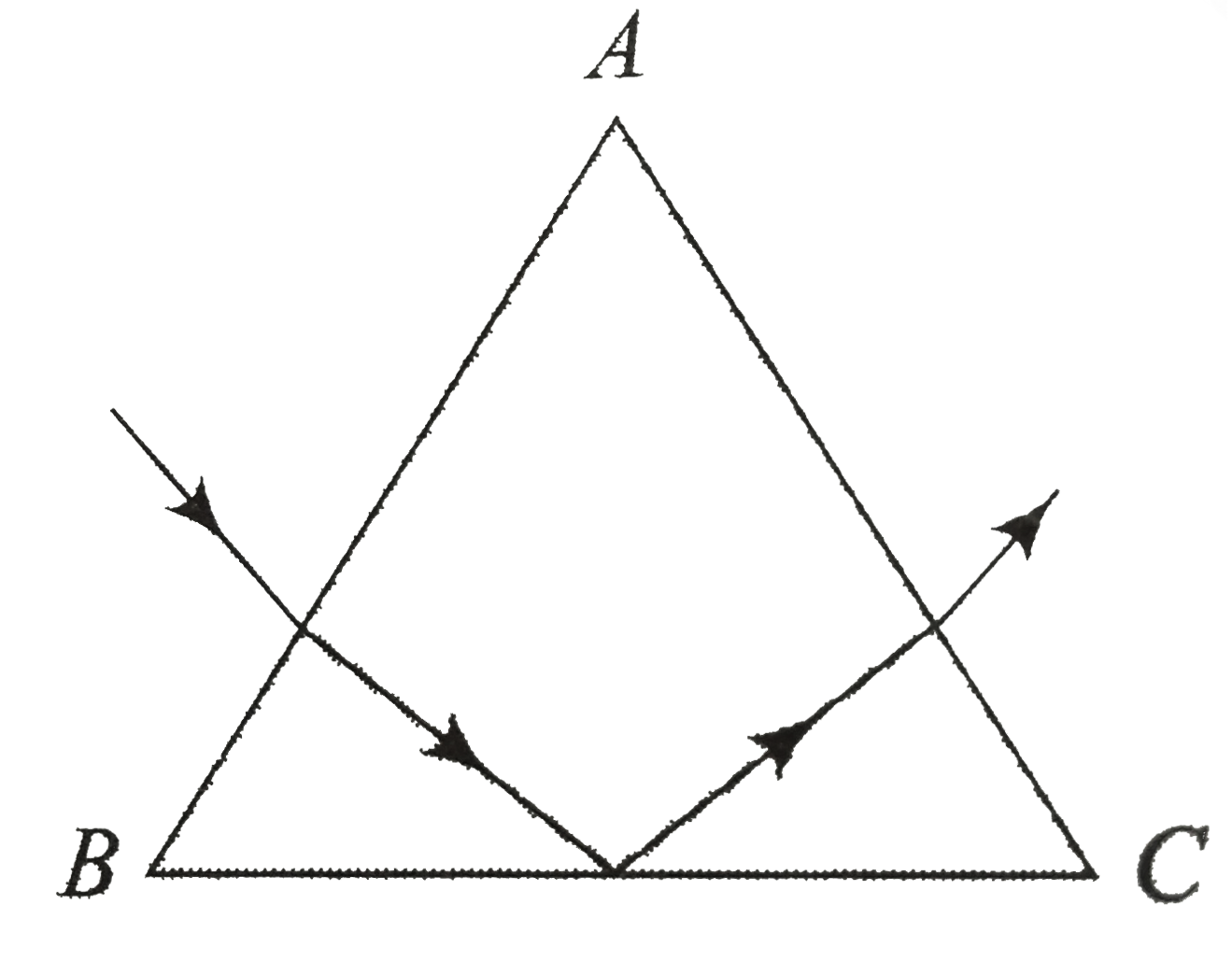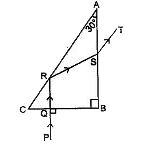A student has to trace the path of way of light through a glass prism. List four precautions he should observe for better results.
To trace the path of light through a glass prism effectively, a student should observe the following four precautions:
1. Use a Sharp Pencil for Drawing Boundaries:
- When marking the outline of the glass prism on the paper, it is essential to use a sharp pencil. A sharp pencil ensures that the lines are clear and precise, which is crucial for accurately tracing the path of light.
2. Maintain Adequate Separation Between the Planes:
- The distance between the two planes (the incident ray and the refracted ray) should not be less than 5 cm. This separation helps in clearly observing the bending of light and avoids any confusion that might arise from overlapping lines.
3. Use Sharp-Edged Pins Placed Vertically:
- The pins used to mark the path of light should have sharp edges and must be placed vertically. Sharp pins create clear points of reference for the light path, and vertical placement ensures that the light rays are accurately represented.
4. Indicate Proper Arrows on the Rays:
- It is important to draw arrows on the incident ray, reflected ray, and refracted ray. These arrows indicate the direction of light travel, making it easier to understand the behavior of light as it passes through the prism.
- When marking the outline of the glass prism on the paper, it is essential to use a sharp pencil. A sharp pencil ensures that the lines are clear and precise, which is crucial for accurately tracing the path of light.
- The distance between the two planes (the incident ray and the refracted ray) should not be less than 5 cm. This separation helps in clearly observing the bending of light and avoids any confusion that might arise from overlapping lines.
- The pins used to mark the path of light should have sharp edges and must be placed vertically. Sharp pins create clear points of reference for the light path, and vertical placement ensures that the light rays are accurately represented.
- It is important to draw arrows on the incident ray, reflected ray, and refracted ray. These arrows indicate the direction of light travel, making it easier to understand the behavior of light as it passes through the prism.
Similar Questions
While traching the path of a ray of light passing through a rectangular glass slab a student tabulated his observations. If in his experiment for two readings he takes two values of ∠ians40∘and50∘ . What should be the correct values of ∠eand∠r in each case ?
View SolutionWhat is the cause of dispersion of white light through a glass prism Draw a ray diagram to show the path of light when two identical glass prisms are arranged together in inverted position with respect to each other and narrow beam of white light is allowed to fall obliquely on one of the faces of the prisms.
View Solution
Knowledge Check
- Question 1 - Select One
The diagram shows the path of light through a right-angled prism of critical angle 42∘.
Observe the diagram and answer the questions that follow:

The phenomenon at the surface AC is:ARefractionBPartial reflectionCTotal internal reflectionDScattering. - Question 2 - Select One
The diagram shows the path of light through a right-angled prism of critical angle 42∘.
Observe the diagram and answer the questions that follow:

Which of the following statement is wrong?ASpeed of light ray PQ is equal to the speed of light ray STBSpeed of light ray QR is equal to the speed of light ray RS.CSpeed of light ray PQ is greater than the speed of light ray RSDSpeed of light ray RQ is greater than the speed of light ray ST. - Question 3 - Select One
The diagram shows the path of light through a right-angled prism of critical angle 42∘.
Observe the diagram and answer the questions that follow:

The angle of incidence at the surface AB isA90∘B0∘C45∘D60∘
The diagram shown below in Fig. 6.8 shows the path taken by a narrow beam of yellow monochromatic light passing through an equiangular glass prism. If the yellow light is replaced by a narrow beam of white light incident at the same angle, draw another diagram to show the passage of white light through the prism and label it to show the effect of the prism on the white light.
 View Solution
View SolutionWhen a ray of sun light passes through the prism, each colour of light has its own speed in the glass. The seven colours come out of the prism with different angles of deviation. Red deviates least and blue deviates maximum. Thus a prism can disperse a white light into seven colours which is called colour spectrum.

For a thin prism, the angle of deviation is given as δ=(n−1)A. The angle of dispersion is given as ϕ=δv−δr. The dispersive power of a prism is ω=ϕδmean=ϕδy
Using the above ideas, give answer the following questions.
A prism has R.I. for violet and red nv=1.523,nr=1.5145. If the angle of prism is A=2∘ the dispersive power of the prism is :View SolutionThe path of a ray of light passing through an equilateral glass prism ABC is shown in figure. The ray of light is incident on face BC at the critical angle for just total internal reflection. The total internal reflection. The total angle of deviation after the refraction at face AC is 108∘. Calculate the refractive index of the glass.
 View Solution
View SolutionThe existence of negatively charged particle in an atom was shown by J.J. Thomson as a result of the studies of the passage of electricity through gases at extremely low pressure known as discharge tube experiments. When a high voltage of the order of 10,000 volts or more was impressed across the electrodes, some sort of invisible rays moved from the negative electrode to the positive electrode these rays are called as cathode rays.

Cathode rays travel in straight path in absence of electrical and magnetic field . Cathode rays consist of material part and charged particles? Cathode rays produce X-rays and light is emitted when they strike on ZnS screen. Cathode rays penetrate through thin sheets of aluminium and other metals . They affect the photogenic plate and passes heating effect when they strike on metal foil. The raito of charge to mass i.e charge/mass is same for all the cathode rays irrespective of the gas used in the tube.
The existence of positively charged particle in an atom was shown be E. Goldstein. He repeated the same discharge tube experiments by using a perforated cathode. It was observed that when a high potential difference was applied between the electrodes, not only cathode rays were produced but also a new type of rays were produced simultaneoulsy from anode moving towards cathode and passes through the holes or canal of the cathode. These termed as canal rays or anode rays.
These rays travel in straight lines and consists of positively charged particles. These rays have kinetic energy and produces heating effect also. The e/m ratio of these rays is smaller than that of electrons. Unlike cathode rays, their e/m value is dependent upon the nature of the gas taken in the tube. These rays produced flashes of light on ZnS screen and can pass throughs thin metal foils. They can produce physical and chemical changes and are capable to produce ionisation in gases.
Select the incorrect statement.View SolutionThe diagram shows the path of light through a right-angled prism of critical angle 42∘.
Observe the diagram and answer the questions that follow:

The angle of incidence at the surface AC isView Solution

